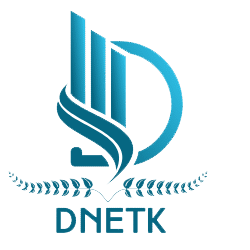In today’s ever-evolving world, new concepts and terms are constantly emerging that capture people’s curiosity. One such term is “Sagerne.” While it may sound unusual at first, it carries intriguing implications across multiple domains—ranging from culture and history to modern innovation. This article aims to break down the idea of Sagerne, exploring its origins, significance, applications, and future potential.
What is Sagerne?
The word Sagerne is versatile, often interpreted differently depending on the context. At its core, it can represent:
- A Concept or Philosophy: Some view Sagerne as a symbolic expression of knowledge, wisdom, and progress.
- A Place or Entity: In historical or cultural narratives, Sagerne could be a name tied to traditions, communities, or landmarks.
- A Modern Innovation: In business and technology, Sagerne is sometimes used to describe platforms, tools, or frameworks that help streamline processes and improve efficiency.
The beauty of Sagerne lies in its adaptability—whether it’s used in literature, science, or technology, it often signifies growth, transformation, and connection.
The Origins of Sagerne
The etymology of Sagerne remains a subject of debate. Some sources suggest that it stems from old linguistic roots tied to the idea of seeking knowledge or organizing thoughts. Others associate it with Scandinavian or European origins, where the word may have been connected to storytelling, governance, or shared wisdom.
In many cultures, words similar to Sagerne have appeared in contexts of unity, purpose, and problem-solving. This historical backdrop has helped shape the modern interpretations of the term.
Why Sagerne Matters Today
In an age where innovation and cultural exchange dominate, concepts like Sagerne play a critical role in helping people:
- Connect Across Boundaries – Whether in business or communities, Sagerne fosters collaboration.
- Preserve Traditions – As a cultural concept, it symbolizes the value of holding onto heritage while embracing change.
- Encourage Innovation – In tech and entrepreneurship, Sagerne represents progress, smart systems, and solutions for modern challenges.
By bridging past traditions with future ambitions, Sagerne has become a symbol of balance between old and new.
Applications of Sagerne in Different Fields
1. Cultural and Historical Relevance
Sagerne can be understood as a repository of stories, legends, and wisdom. Communities often rely on shared narratives to pass knowledge from one generation to the next. In this sense, Sagerne acts as a cultural glue that preserves identity.
2. Education and Learning
In modern education, Sagerne is often linked to methods of teaching that focus on creativity, critical thinking, and collective growth. It could be a philosophy that encourages students not just to memorize, but to understand deeply.
3. Business and Technology
In business environments, Sagerne represents innovation frameworks that streamline processes, enhance communication, and boost productivity. Some organizations adopt the “Sagerne way” as a strategy for problem-solving and decision-making.
4. Personal Development
On an individual level, Sagerne can serve as a personal mantra—urging people to pursue growth, learn from experiences, and stay adaptable in changing circumstances.
Key Principles of Sagerne
At its heart, Sagerne revolves around a few guiding principles that make it universally relevant:
- Adaptability: Embracing change while respecting roots.
- Collaboration: Working together to achieve common goals.
- Wisdom: Applying past knowledge to solve future challenges.
- Innovation: Constantly seeking better solutions.
- Balance: Maintaining harmony between tradition and progress.
These principles make Sagerne a philosophy for modern living.
Benefits of Embracing Sagerne
Understanding and applying Sagerne can bring several benefits, both personally and professionally:
- Enhanced Creativity – Encourages thinking outside the box.
- Stronger Connections – Builds better communication and trust.
- Cultural Awareness – Helps preserve traditions while adapting to global trends.
- Problem-Solving Skills – Offers structured yet flexible approaches to challenges.
- Personal Growth – Inspires lifelong learning and self-improvement.
The Future of Sagerne
Looking ahead, Sagerne has the potential to evolve into a global philosophy that merges cultural heritage with technological progress. In education, it may inspire new curricula; in business, it could fuel smarter frameworks; in everyday life, it may guide people toward balanced and meaningful living.
With the rise of digital platforms and AI-driven systems, Sagerne could also become a metaphor for human-machine collaboration—where knowledge, tradition, and innovation intersect to shape the future.
Frequently Asked Questions (FAQs)
1. What does Sagerne mean?
Sagerne is a versatile term that can represent knowledge, culture, innovation, or a guiding philosophy depending on the context.
2. Is Sagerne a real place or concept?
It can be both—a symbolic concept in philosophy and culture, or even a name tied to certain communities or traditions.
3. How can businesses use the idea of Sagerne?
Businesses can adopt Sagerne as a framework for problem-solving, collaboration, and innovation. It helps organizations embrace adaptability while maintaining core values.
4. Can individuals apply Sagerne in daily life?
Yes. On a personal level, Sagerne encourages self-growth, creativity, and the ability to adapt to change without losing one’s identity.
5. What is the future of Sagerne?
The future of Sagerne lies in its adaptability—potentially becoming a global philosophy that bridges tradition and modern innovation.
Conclusion
Sagerne is more than just a word—it’s a symbol of balance, wisdom, and innovation. Rooted in cultural traditions yet open to modern interpretations, it has something valuable to offer across education, business, personal development, and technology.
By embracing the principles of Sagerne—adaptability, collaboration, wisdom, and innovation—we can build stronger connections, solve challenges effectively, and create a future that honors both heritage and progress.

